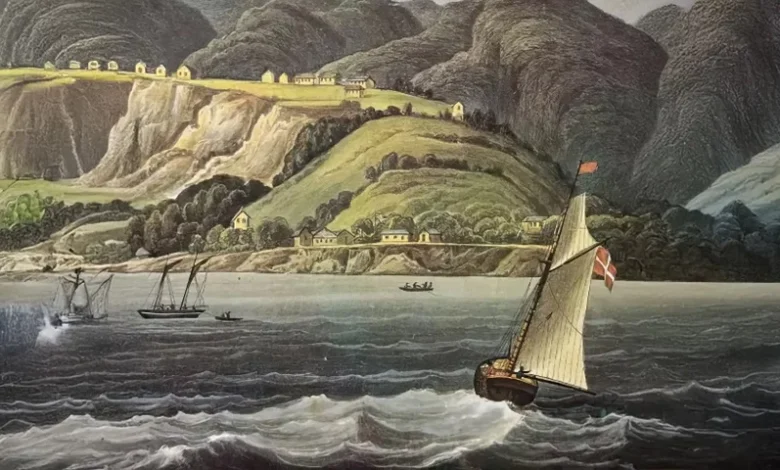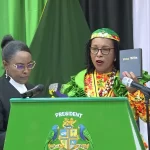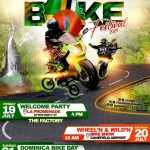The Dominica Story: A History of the Island

“The Dominica Story: A History of the Island” is a seminal work by renowned historian and anthropologist Dr. Lennox Honychurch. This comprehensive book explores Dominica’s rich history, from its earliest indigenous inhabitants to contemporary times. Through meticulous research and engaging narrative, Honychurch chronicles the events, cultures, and people shaping the island’s unique identity.
About “The Dominica Story: A History of the Island”
Born in 1952, Dr. Lennox Honychurch’s contributions have significantly influenced the understanding of Caribbean history and culture. Raised in the village of Calibishie, he developed a deep appreciation for Dominica’s heritage. Educated at the University of Oxford, Honychurch returned to share his knowledge as a teacher, historian, and author, becoming a leading authority on Dominica’s past.
The Significance of “The Dominica Story”
First published in 1984, “The Dominica Story” is the most comprehensive account of the island’s history. Honychurch’s work fills a crucial gap, providing locals and international readers with a detailed understanding of Dominica’s complex historical narrative. The book combines archaeological findings, historical documents, and oral traditions to portray the island’s journey through time vividly.
Indigenous Heritage and Early Inhabitants
The book begins by delving into the lives of Dominica’s first settlers, the Kalinago people. Known as the Caribs by Europeans, the Kalinago called the island Waitukubuli, meaning “Tall is her body.” Honychurch explores their social structures, spiritual beliefs, and their profound connection with the land and sea.
Kalinago Society and Culture
Honychurch highlights the importance of villages like Sineku, Bataka, and Crayfish River, located in what is now the Kalinago Territory. He details traditional practices such as canoe building, basket weaving, and herbal medicine, emphasizing how these customs have endured despite the impacts of colonization.
European Contact and Its Effects
The arrival of Europeans brought significant challenges to the Kalinago. Honychurch examines events like the Kalinago Genocide of 1626, illustrating the devastating consequences of Spanish, French, and British incursions. He provides insight into the resistance and resilience of the Kalinago people during this tumultuous period.
Colonial Struggles and the Plantation Economy
The narrative progresses to the era of European colonization, focusing on the fierce rivalry between the French and British from the 17th to the 18th centuries. Honychurch details how Dominica’s strategic location and natural resources made it a coveted prize for colonial powers.
Establishment of Plantations and Slavery
The introduction of plantation agriculture brought about significant social and economic changes. Portsmouth, Roseau, and the Layou Valley became sugar, coffee, and cocoa production centres. Honychurch discusses the harsh realities of slavery in Dominica, including the brutal conditions faced by enslaved Africans and the disruption of their cultures.
Resistance and the Maroon Communities
Amidst oppression, enslaved Africans sought freedom by escaping to the mountainous rainforest, forming Maroon communities in regions like Morne Diablotin and Morne Trois Pitons. Honychurch explores significant revolts, such as the Negro Conspiracy of 1785 and the influence of the Haitian Revolution in inspiring local resistance.
Journey Towards Independence
Honychurch meticulously traces Dominica’s path from colonial rule to self-governance, highlighting key events and figures that propelled political and social change.
The abolition of slavery in 1834 marked a pivotal moment. Honychurch examines the challenges faced by freed individuals, including land ownership struggles and economic hardships. He discusses the formation of villages like Grand Bay, Marigot, and Wesley, where formerly enslaved people established new communities and preserved cultural traditions.
Political Awakening and Movements
The early 20th century saw a rise in political consciousness. Honychurch details the formation of the Dominica Representative Government Association and the role of leaders like Edward Oliver LeBlanc and Phyllis Shand Allfrey in advocating for social justice and labor rights.
The culmination of political efforts led to Dominica achieving Associated Statehood in 1967 and full independence on November 3, 1978. Honychurch reflects on the significance of this achievement and the challenges faced by the new nation in establishing its identity and economic stability.
Cultural Revival and Preservation
In the latter chapters, Honychurch emphasizes the importance of cultural heritage and the efforts made to preserve Dominica’s traditions and environment.
Restoring landmarks such as Fort Shirley in Cabrits National Park symbolizes a commitment to honouring the past. Honychurch highlights initiatives to protect historical structures, including plantation estates and military fortifications, as tangible connections to history.
He goes on to discuss the resurgence of interest in indigenous culture, the celebration of Creole Day (Jounen Kwéyòl), and the preservation of the Kwéyòl language. He underscores the role of festivals like the World Creole Music Festival in fostering national pride and cultural expression.
Environmental Stewardship
Recognizing Dominica’s rich biodiversity, Honychurch advocates for environmental conservation. He details the designation of Morne Trois Pitons National Park as a UNESCO World Heritage Site in 1997, showcasing the synergy between cultural identity and the island’s natural heritage.
Legacy and Impact of “The Dominica Story”
“The Dominica Story” has become essential for understanding the island’s history, culture, and society.
The book is widely used in schools and universities, serving as a foundational text for students and researchers. Honychurch’s accessible writing style and thorough scholarship make complex historical narratives engaging and understandable.
The book has strengthened national identity and unity by bringing to light the struggles and triumphs of Dominica’s people. It encourages readers to appreciate the diverse influences that have shaped the island and value preserving their heritage.
International Recognition
Honychurch’s work has garnered international acclaim, raising awareness of Dominica’s history on a global stage. “The Dominica Story” has facilitated cultural exchange and has been instrumental in promoting the island as a destination rich in history and culture.




